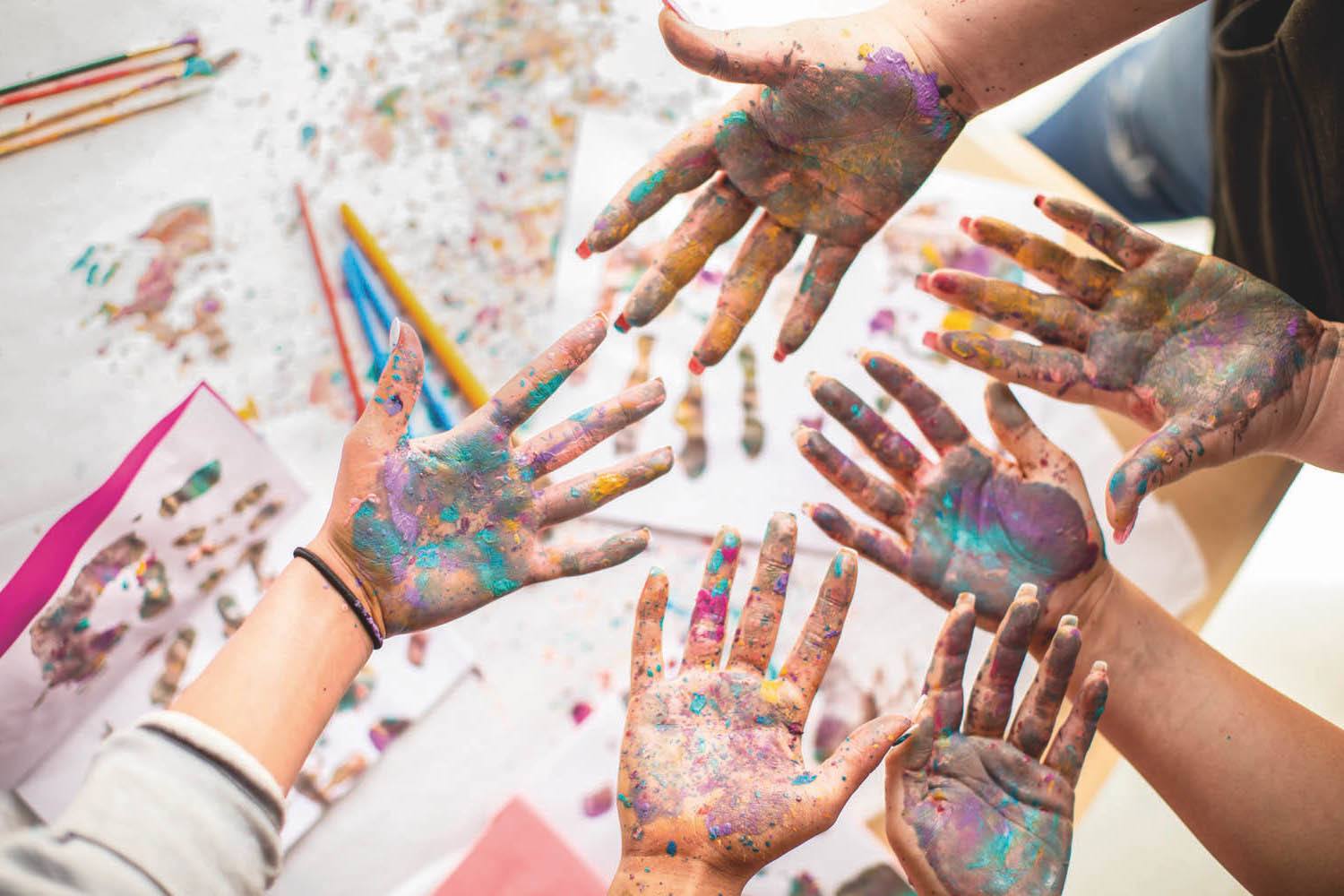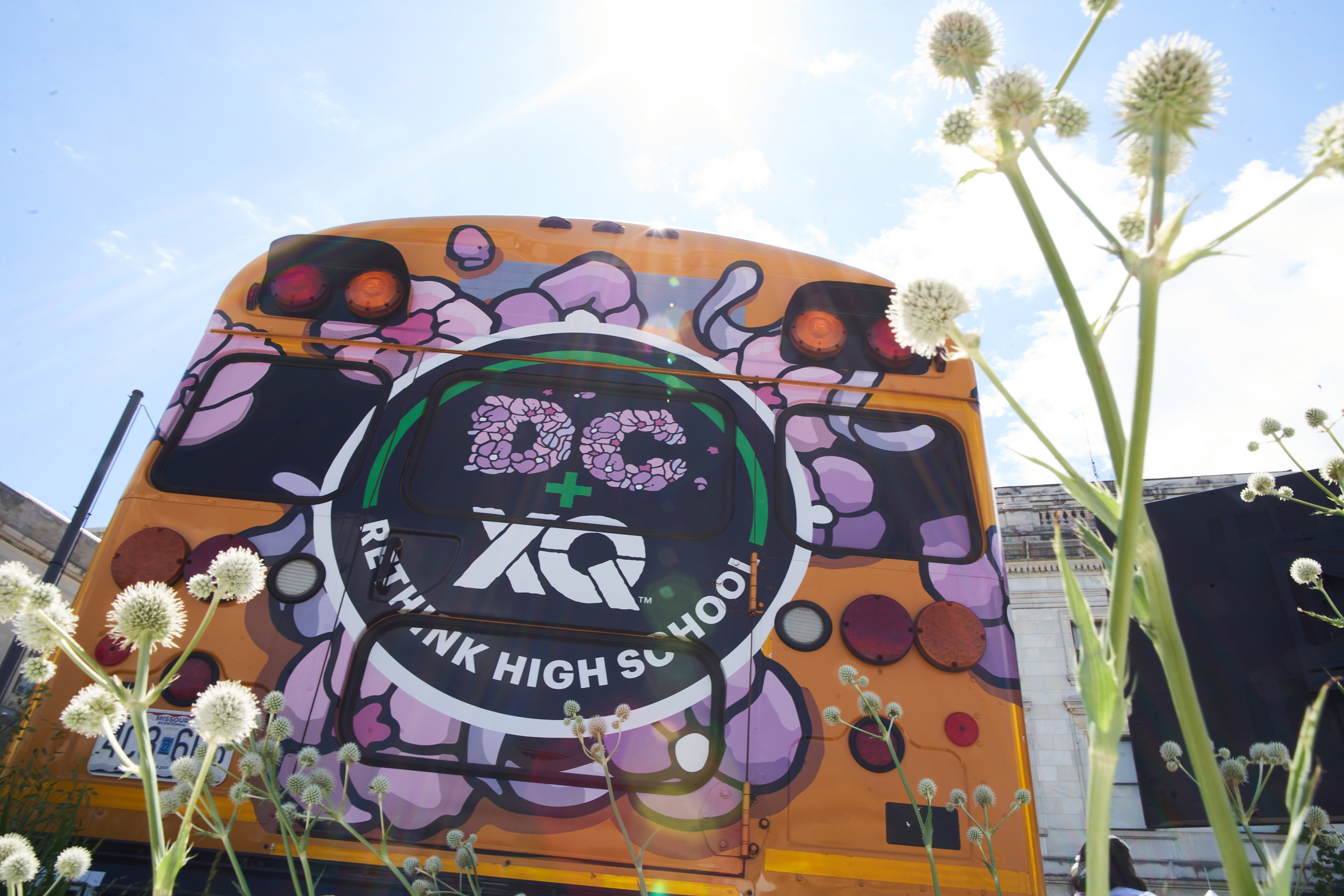The Importance of Arts Education and Why the Arts Matter in the Age of COVID-19
In remote learning, arts education has never been more fragile. Here's how these educators are sparking creativity in their students and learn how you can too.

Sometimes, a song is more than a collection of sharps, flats, and chords. It can be a gateway to joy, to empathy, and—most important during tumultuous times like these—empowerment. Unfortunately, COVID-19 induced school closures have placed the future of arts education and its subsequent empowerment in a precarious position. As schools struggle to keep core subjects moving, arts programs are at risk of being cut—and without communal effort to remind our communities of the importance of creative thinking, we may be at risk of losing it.
This communal reminder is the goal of a new initiative by XQ, the XQ Music and Activism Challenge. The first-of-its-kind learning experiences attempts to supplement art education during a time when most schools are struggling to get by. Creative thinking isn’t a luxury. It’s an integral part to building well-rounded students ready to take on the world and solve problems on a massive scale. The XQ Challenge bolsters your school’s arts program by giving students access to a platform to learn how to create a song; access to mentors, creators, and brands; and amplification and exposure of their music.
Why arts education is crucial: giving students a space to voice issues close to their hearts
“We want to create a space for young people to shine a light on what matters most to them, to take a moment to do something creative in their own voice,” said Sarah Baltazar-Pinheiro, senior product director at XQ. “We also want young people from across the country to engage in a discussion and build community and mobilize over issues that are important to them. After all, this is the next generation of songwriters, of artists, of voters.”
The XQ Challenge has been particularly relevant during the pandemic, when so many students are feeling uncertain about the future and disconnected from their peers because of campus closures. It gives them a way to express themselves artistically and share their ideas and emotions about the issues impacting their lives, collaborating with their classmates in the process.
Some students have already started.
[Check out this article to learn how students found their voices this election season.]
Empowering students through creativity
In Ty Boyland’s music production class at Crosstown High in Memphis, students are learning to write meaningful lyrics, merge words with a melody, and think about issues like the Black Lives Matter movement, sex trafficking, and gender equality.
It’s a perfect fit for Crosstown, an XQ school that focuses on community connections, diversity, and student voice.
“We are so excited about the XQ Challenge. It’s led us to have a lot of conversations, very deep discussions about all kinds of issues,” Boyland said. “For a lot of students, creating music and art is really about character development. I tell my students, are you able to speak your truth? If you’re able to do that, you’ll do well in life no matter what you do.”
During a recent class, held virtually, students practiced writing raps on two subjects: the concept of chivalry and mental health. The topics led to lively discussions about courtesy and respect, and the anxiety and depression so many young people are experiencing now.
Vanessa, a student in Boyland’s class, said discussions like those have helped her learn to express herself and process her emotions during these difficult times.
“I really enjoy how we’re talking about real stuff. We’re not sugar-coating anything,” she said. “And this stuff needs to be talked about.”
Her classmate, Dre, said he’s been so inspired by the class he recently visited a Memphis music studio to watch local rappers practice their craft.
“Just the thrill of being able to spread your words and inspire others…it was riveting,” he said. “I feel this class is about freedom of speech. There’s no hate. There’s no bad feedback. We’re learning how to express ourselves.”
Boyland encourages his students to take an idea or an emotion and explore it on multiple levels, looking for connections and broader meaning. His class feels like a combination of English language arts, politics, current events, and history—all set to a hip-hop soundtrack.
“I tell my students, just because something sounds good, that’s not always enough,” he said. “We want to go beyond. We want people to feel it. We want to tell a story…That’s how we can breathe some life into our song writing.”
Similarly, Brooklyn, a student in Boyland’s class, said the class has helped her become more comfortable speaking up and sharing her thoughts about sensitive issues, not just at school but in her life generally.
“I’m usually a nervous person,” she said. “But now I’m more self-confident. Here, someone actually wants to listen.”
Check out how this school uses project based and placed based learning during COVID-19.
How to bolster arts education during remote learning
The XQ Music and Activism Challenge is the first of three arts-related initiatives XQ is planning to elevate arts education in schools. The next two XQ Challenges will focus on visual arts with New Orleans artist BMike Odums and dance with Misty Copeland, the first Black female principal dancer with the prestigious American Ballet Theatre.
For decades, budget shortfalls have reduced and limited art education at many schools, leaving thousands of young people with little or no experience in music, drama, painting, dance, or other arts. The problem has been especially acute during the pandemic, when schools are focusing on core academics rather than electives, and hands-on activities like art have proven particularly difficult to teach virtually.
But some teachers have found that the arts are a perfect way to engage students during distance learning. Janet Hollingsworth, a director at Washington Leadership Academy—an XQ school in Washington, D.C.—teaches a class called “Engineering with Empathy,” which merges practical concepts like circuitry and computer-aided design with creative skills that require resourcefulness and an ability to think outside the box. It’s part of WLA’s overall emphasis on computer science and technology.
Using DIY kits Hollingsworth compiled and mailed to students’ homes, students made robots of motors, LED lights, coin cell batteries, and recycled materials. At the end of the project they held an online robot dance party.
Now, they’re designing holiday gifts for family and friends, such as key holders, bedroom door signs, and 3-D avatars. Students design the gifts at home, then Hollingsworth fabricates them in the school’s maker space using a laser-cutter, vinyl cutter, and 3-D printer, and mails the projects to the students’ homes.
The students have loved it, she said—especially the gift project.
“It’s been such a weird year, but one thing that helps is bringing joy to others. Why not let the school play a supporting role in that?” Hollingsworth said. “Students are invested because what they’re making matters. It’s useful, it has an immediate impact, it’s for someone they love.”
Designing an arts-focused class during distance learning has not been easy, she said. Art and maker activities are, by nature, hands-on, so she had to think of ways for students to work independently, using common objects found at home, and make objects that could be built safely and easily. But it’s been worth it, she said.
“It’s been challenging for sure. But growth can be painful,” she said. “If we’re asking our students to learn and grow, we as educators should, too.”









